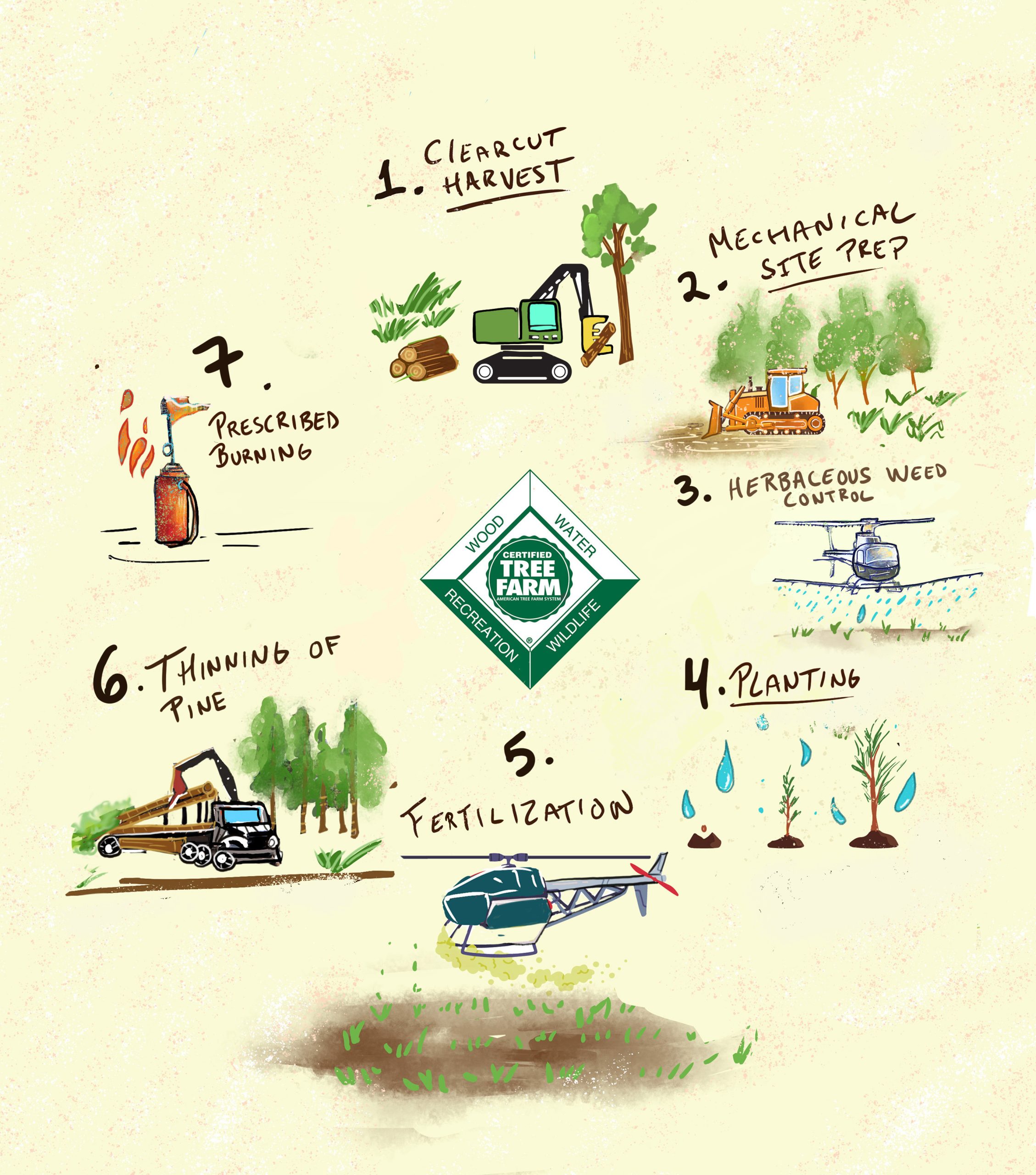
- CLEAR CUT HARVEST
- MECHANICAL SITE PREP
- HERBACIOUS WEED CONTROL
- PLANTING
- FERTILIZATION
- THINNING OF PINE
- PRESCRIBED BURNING
Clearcut logging is a forestry activity where all trees in a forest tract are harvested. Where do the trees go? The trees are loaded on log trucks and driven to Sawmills and Paper mills to create all of the products we use daily in our lives. Each log truck carries an estimated 28 tons of trees. One tree approximately weighs one ton. The clearcut is used to establish a new plantation of young trees with full sunlight that allows them to grow most productively in the warm, moist South Carolina environment.
After a clearcut harvest, the first step to establish a new forest is preparing the site for planting. This activity includes the use of large bulldozers. They use a huge, serrated V blade to shear stumps and distribute the logging debris, in preparation for replanting. Logging debris sometimes may need to be piled and burned to create a more clean site for the tree planters to work.
Best practice is to wait approximately three to six months following mechanical site preparation to allow the weeds and woody vegetation to sprout fully in the hot summer months of July, August and September. After the beds have been prepared in order to reduce competition for the small young seedlings, this sprouting is sprayed with chemicals, called Chemical Site Preparation or Herbaceous Weed Control (HWC), by helicopter. This application kills the aggressive weeds resulting in a clean, fully prepared site for replanting seedlings, giving them the best chance for survival and maximum early growth without competing vegetation.
Planting is best done in December/January when the trees are dormant and the soils damp and cooler. There are many steps in establishing a new tree plantation, most importantly, good site preparation. A close second is selecting the best quality seedlings for the site. Bailey Mill Plantation is constantly evaluating growth rate, form and survival rate of the trees planted. Choosing the best genetics and healthy seedlings from the nursery is critical. The quality of the tree planting job is also very important as the fragile root systems must be in the best shape to survive and grow.
The young seedlings usually do not require fertilization, but their growth is accelerated if they are fertilized. Soil sampling and analysis provide the data to build the appropriate fertilizer mixture. Clemson University is a good soil analysis partner. The fertilizer is usually applied with helicopters to get a uniform dosage.
The first thinning is a harvest that occurs in the initial 8-12 years of the plantation cycle. At this stage the trees have reached a marketable size for pulpwood. Pulpwood is used to manufacture paper products. Examples of paper products include, toilet paper, tissues, writing paper and the huge demand for corrugated and folding carton packaging.
The objective of the first thinning is to open up the stand and provide more sunlight to the crown of the trees, reducing competition for sunlight and soil nutrients which accelerates growth. The first thinning often removes every 4th or 5th row of planted trees and any poorly formed or weaker trees on each side of the row to reduce competition for the dominant, future crop trees.
Prescribed fire, or controlled burning, is an important forest management tool. The United States South has a long history of using prescribed burning which greatly reduces the fuel responsible for wildfires. The western forest regions often do not use prescribed fire, which results in a large build up of fuel from dead trees and branches. This is the root cause of the huge wildfires burning annually. This results in the loss of millions of acres of forestland and billions in property damage. Prescribed fire is also a great tool for improving wildlife habitat, by creating young sprouting vegetation for animals to eat.